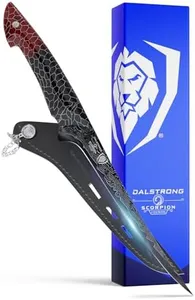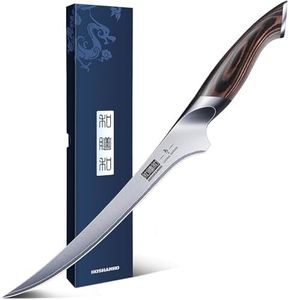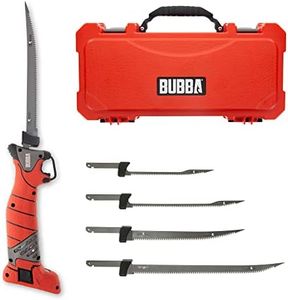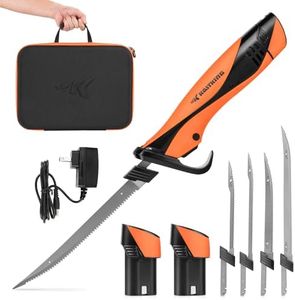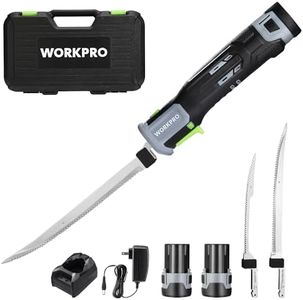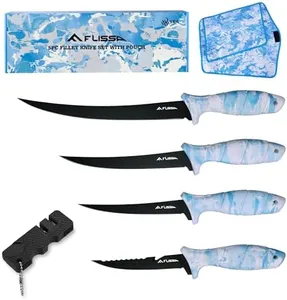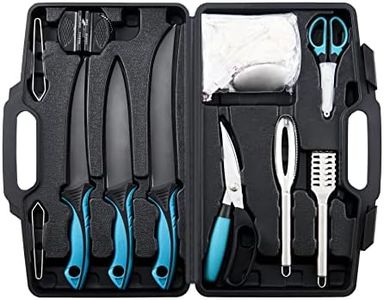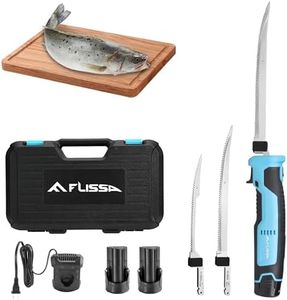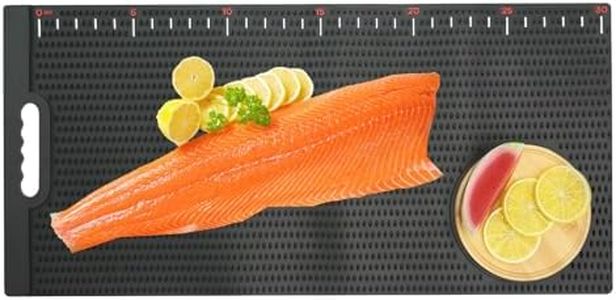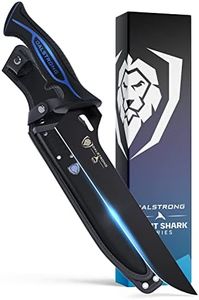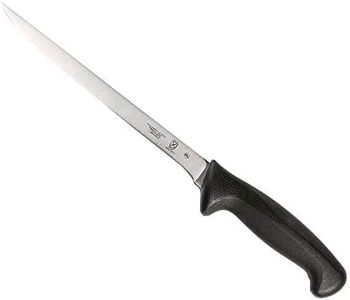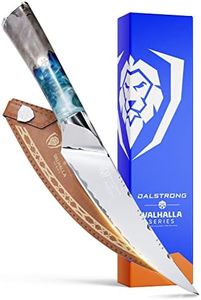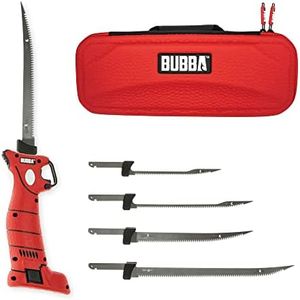10 Best Fish Fillet Knives 2025 in the United States
Our technology thoroughly searches through the online shopping world, reviewing hundreds of sites. We then process and analyze this information, updating in real-time to bring you the latest top-rated products. This way, you always get the best and most current options available.

Our Top Picks
Winner
HOSHANHO Fillet Knife 9 Inch, Super Sharp Boning Knife in High Carbon Stainless Steel, Professional Japanese Fish Knives for Meat Poultry Cutting
Most important from
2532 reviews
The HOSHANHO 9-inch fillet knife is designed especially for precision work like filleting fish, but it also handles other meats well. Its blade is made from high-quality Japanese high carbon stainless steel, which keeps the edge sharp for longer and resists rust, so it stays reliable over time. The 9-inch length gives you enough blade to smoothly cut through fish bones and flesh, while its thin and flexible blade makes it easier to follow the natural curves of the fish, resulting in cleaner cuts and less waste.
The handle is made from pakkawood, a sturdy and water-resistant material that offers a comfortable, ergonomic grip to reduce hand fatigue during longer use. Weighing about 1 pound, the knife feels balanced and light enough to control easily but has enough heft to make cutting efficient. One thing to note is that it’s not dishwasher safe, so hand washing is needed to maintain the blade and handle quality.
This knife represents a solid choice for anyone looking for a professional-style fillet knife that combines sharpness, flexibility, and comfort for everyday kitchen use.
Most important from
2532 reviews
BUBBA Pro Series Lithium-Ion Electric Fillet Knife with Non-Slip Grip Handle, 4 Ti-Nitride S.S. Coated Non-Stick Reciprocating Blades, Charger and Case for Fishing
Most important from
2600 reviews
The BUBBA Pro Series Lithium-Ion Electric Fillet Knife is a powerful tool designed with durability and ease of use in mind. Its standout feature is the non-slip grip handle, which is crucial for maintaining control while filleting fish, making it particularly suitable for fishing enthusiasts. The handle also has a battery life indicator, ensuring you know when it needs recharging, which adds to the convenience factor.
The knife is equipped with a heavy-duty drive system and a brushless motor, offering increased power and torque, making it one of the most powerful electric fillet knives available. The aluminum alloy housing enhances its durability, while the four Ti-Nitride stainless steel blades are designed to be both tough and non-stick, reducing the chances of meat residue sticking to the blade. However, at 1.11 pounds, it might feel a bit heavy for prolonged use.
The blade length at 9 inches is optimal for most filleting tasks, but the flexibility of the blades is not specified, which could be a potential drawback for those needing precision. The knife is cordless, adding to its portability, and comes with a charger and case, making it a comprehensive package for outdoor fishing trips. Despite being robust and feature-rich, the price might be a consideration for some users. Ideal for serious anglers looking for a durable, high-performance fillet knife, it strikes a great balance between power and usability.
Most important from
2600 reviews
KastKing Speed Demon Pro Lithium-ion Electric Fillet Knife - Cordless Rechargeable Fishing Knife with 4 Blades, High Torque Motor with Extended Battery Life, Ergonomic Handle and Custom Carry Case
Most important from
733 reviews
The KastKing Speed Demon Pro is a cordless electric fillet knife designed to make fish cleaning faster and easier. It features corrosion-resistant 420 stainless steel blades with a tough titanium coating, which helps the blades stay sharp and last longer even in wet conditions. The pack includes four blades of varying lengths (7" to 12") suited for different fish sizes, giving you flexibility depending on your catch. Its high-torque motor powers through filleting smoothly, helping reduce effort and speeding up the process.
The handle is made from soft thermoplastic elastomers (TPR), offering a comfortable, non-slip grip that’s balanced to minimize hand fatigue during extended use. Weighing about 4 pounds, it’s heavier than a manual knife but still manageable thanks to its ergonomic design. One of the biggest advantages is the long-lasting lithium-ion battery, delivering around 1 hour and 40 minutes of continuous use, with two batteries included for seamless swapping. This is great for long fishing trips without worrying about running out of power. The knife also comes in a slim, custom carry case that fits easily in boat compartments or luggage.
As an electric tool, it requires battery charging and occasional blade maintenance, which might be less convenient than a traditional fillet knife for some. Also, its weight and size mean it’s less handy for quick or small tasks compared to a simple handheld knife. This knife is well suited for anglers who want an efficient, powerful fillet tool and don’t mind the extra gear involved. It’s especially useful for those cleaning larger fish or multiple catches and looking for comfort and speed over manual effort.
